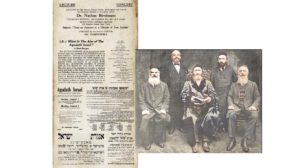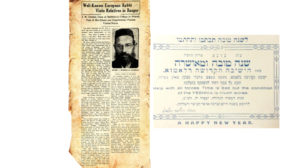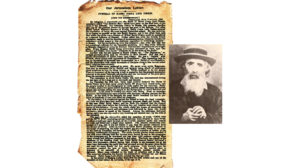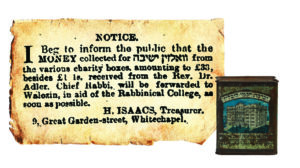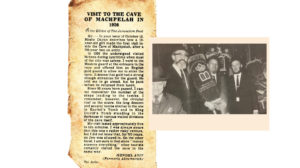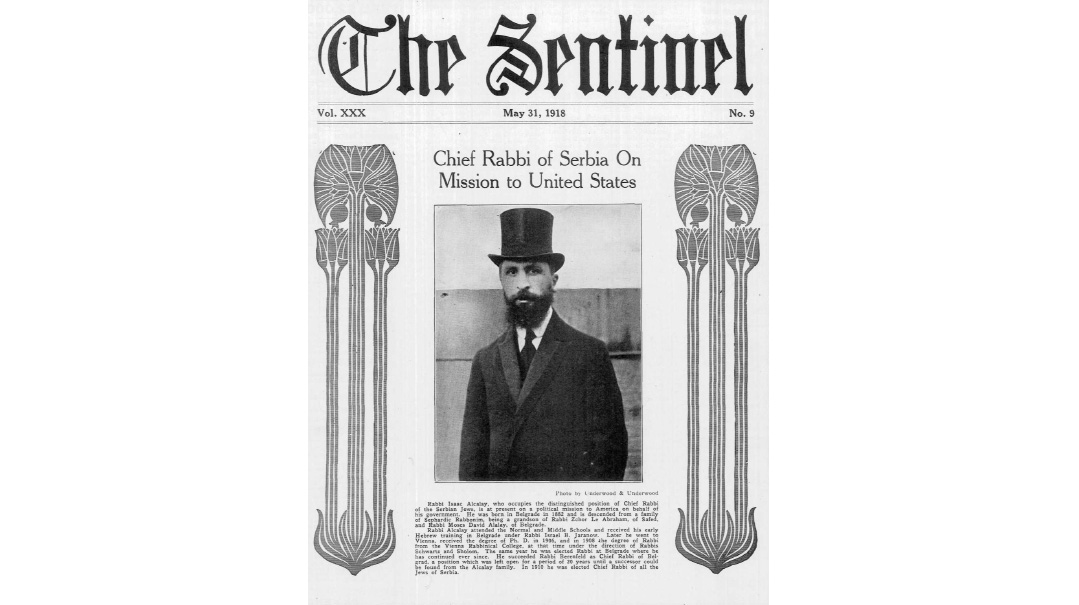Kovno Kollel 2.0
| May 11, 2021The mother of all kollelim
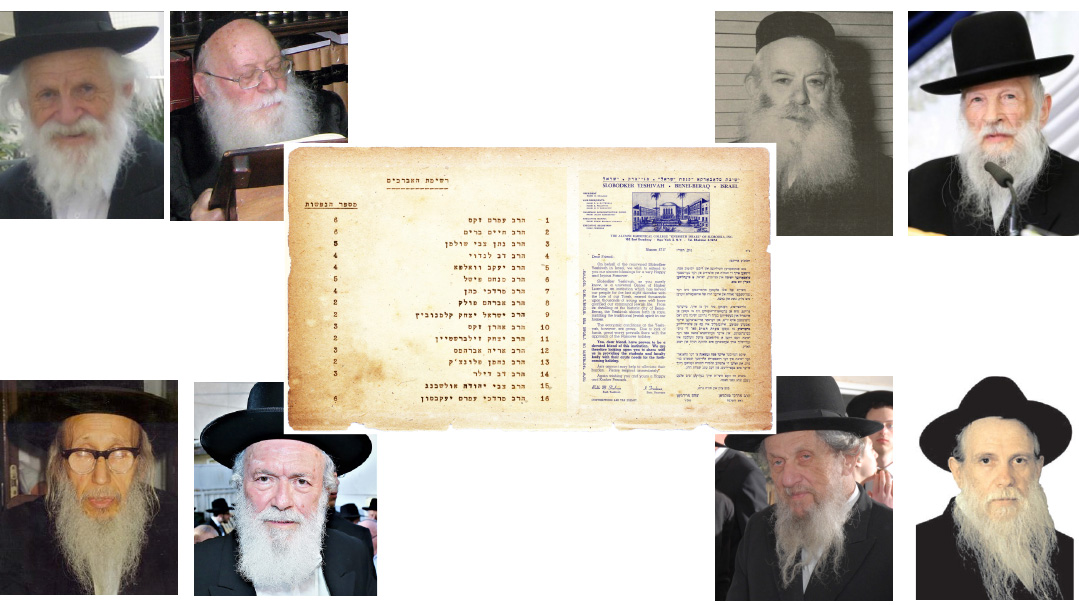
Title: Kovno Kollel 2.0
Location: Bnei Brak
Document: Slabodka Kollel List
Time: 1960
The Mother of All Kollelim
The first modern institution of the kollel, as we know it today, was founded in Kovno in 1877. The famed Kovno Kollel grew into the primary institution for the development of the next generation’s Torah leaders. At various stages, Rav Yitzchak Elchonon Spektor, Rav Yisrael Salanter, Rav Itzele Blazer, the Alter of Slabodka, and the Dvar Avraham, among other Torah giants, were involved in the activities of the kollel. Later, the kollel would merge with the Slabodka yeshivah. Among the many luminaries to have studied there are Rav Dovid Leibowitz, Rav Yaakov Kamenetsky, Rav Yitzchok Ruderman, and Rav Chaim Telzer.
At the onset of World War II, the rosh yeshivah of Slabodka, Rav Isaac Sher, was in Switzerland being treated for an illness. As the situation worsened back home, the elderly rosh yeshivah was able to receive coveted entry papers to Palestine, immigrating there in 1941 with the hope that the yeshivah would soon join him there. Initially living in Jerusalem, he would give mussar talks to groups of talmidim in Chevron and other yeshivos. He then set out to reestablish his illustrious yeshivah in Bnei Brak.
Following the war, he was joined by his son-in-law Rav Mordechai Shulman, who had been stranded in the United States. With the assistance of an established Slabodka alumni base in America, which was led by Rav Yaakov Kamenetsky, Rav Ephraim Pelcovitz, and Rav Moshe Don Sheinkopf, he embarked upon a campaign to build a campus that would eclipse the state-of-the-art building that the yeshivah had moved into in Slabodka just months before the Soviets closed it.
The cornerstone-laying ceremony for the new building was a grand affair, held on the last day of Chanukah 1946. Rav Sher declared, “Since the destruction of the Beis Hamikdash, HaKadosh Baruch Hu has nothing in His world aside from the four cubits of halachah. The same applies to us. After the terrible destruction of Europe’s Torah centers, we have nothing but the four cubits of Torah — the yeshivah.”
It wasn’t long before the yeshivah was filled with elite bochurim from both the litvish and chassidic worlds, coming from as far away as the United States and South Africa to bask in the shiurim and mussar vaadim of Rav Isaac Sher. In 1951, Rav Yechezkel Abramsky arrived in Israel and began to deliver shiurim at the yeshivah. Two grandsons of the Alter of Slabodka, Rav Eliezer Plachinsky and Rav Eliezer Goldschmidt, said popular shiurim as well.
At the same time, the yeshivah reestablished the famed Kovno Kollel there, attracting some of the elite young lamdanim in the country, many of whom would become household names across the Torah world.
Rav Dov Landau
(1930–) was born in Poland to a family of Strikov chassidim who immigrated to Palestine when he was a child. Growing up in Rechovot, which lacked a proper Torah infrastructure, he attended a local Yemenite talmud Torah. He later went on to study in Ponevezh and Chevron. His marriage to Adina Sher, granddaughter of Rav Isaac Sher and child survivor of the Kovno Ghetto, brought him into the Slabodka family. He was eventually appointed rosh yeshivah of Slabodka in Bnei Brak, a position he still holds today. He is also the author of several popular seforim.
Rav Zvi Yehuda Olshwang
(1874–1961) was a talmid of Rav Lazer Gordon and his eventual brother-in-law Rav Shimon Shkop at Telshe, before studying in Volozhin and Kelm. He served as the rav in Vitebsk until immigrating to America, where he served in the Chicago rabbinate. Rav Olshwang never merited having children, and following the passing of his second wife in 1946, he accepted an offer to be the mashgiach ruchani at the newly established Telshe Cleveland. Two years later, he fulfilled a lifelong dream and moved to Eretz Yisrael, where he joined the kollel in Slabodka — even eating his meals in the yeshivah dining room.
Rav Yisrael Kalmanowitz
(1931–) arrived in Slabodka Bnei Brak from the United States, where he had previously basked in the light of his illustrious father, Rav Avraham Kalmanowitz. He grew close with iconic figures such as Rav Chatzkel Levenstein and the Brisker Rav, and served for a time at the helm of the Gaon Yaakov yeshivah in Bnei Brak. Eventually a kollel named for his father, Knesses Beis Avraham, was opened, which he continues to head. In addition, he achieved renown as a unique baal tefillah, with a passionate and intense daily minyan of followers.
Rav Nosson Tzvi Shulman (1930–2016) was one of the few child survivors of the Kovno Ghetto, where his heroic mother Chaya Miriam kept him alive by hiding him with gentiles. After the war, she entrusted his chinuch to the saintly Rav Mottel Pogromansky. In 1954 he married the daughter of Rav Yechiel Michel Schlesinger, upon the recommendation of the Chazon Ish, who sang his praises. He subsequently served as a rosh yeshivah in Slabodka and helped establish a beis din with Rav Nissim Karelitz. Various medical issues began to plague him and in 1988 he moved to Strasbourg, France, where he helped establish a yeshivah and kollel.
Rav Yitzchok Zilberstein
(1934–) was born in Poland and immigrated to Palestine with his family as a young boy, where he learned in Etz Chaim under Rav Aryeh Levin, eventually moving on to Slabodka–Bnei Brak, where he learned under Rav Yechezkel Abramsky. After marrying Aliza, the daughter of Rav Elyashiv, they moved to Lucerne, Switzerland, where he served as a rosh mesivta. Currently, he is the av beis din of the Ramat Elchanan neighborhood of Bnei Brak, the rosh kollel of Kollel Beis David in Holon, and the rav of Mayanei Hayeshuah Hospital in Bnei Brak. His opinion is frequently sought and quoted on all matters of halachah, while his many seforim covering a vast array of contemporary halachic issues enjoy immense popularity.
Rav Chaim Brim
(1922–2002) was born into a family of Boyan chassidim. After studying in Etz Chaim, he became one of the ten founding talmidim of Mir Yerushalayim, before seeking out the Chazon Ish and becoming one of his closest students. The childless Chazon Ish would refer to him as “my son.” Rav Brim was the founder of many yeshivos and kollelim, while delivering shiurim at others such as Mir Yerushalayim and a stint as the rosh yeshivah in New Square. Rav Brim was a close follower of the Boyaner Rebbe. In the wake of the Six Day War and the baal teshuvah movement that swept the country, Rav Chaim headed groups of askanim that evolved into the Shiurei Torah network of Agudas Yisrael, which he maintained for the rest of his life.
Rav Aryeh Abrahams
(1931–2019) was born in America and arrived in Israel as an 18-year-old. After marriage into the Karelenstein family, he maintained a close relationship with his brother-in-law Rav Yisrael Kalmanowitz. Rav Aryeh Abrahams went on to serve as the rosh kollel of the Toras Avraham kollel in Bnei Brak for decades. Rav Yitzchak Grodzinski founded this kollel in memory of his father, the Slabodka mashgiach Rav Avraham Grodzinski. In addition, he served as the rabbi of the central shul of talmidei Chazon Ish, which counted Rav Chaim Greineman among its members.
Rav Amram Zaks
(1926–2012) grew up in an illustrious Jerusalem family and was famed as an illui in his youth. He was a talmid of Rav Isser Zalman Meltzer in Etz Chaim and was close to both the Chazon Ish and the Brisker Rav. In 1947 he joined Slabodka–Bnei Brak shortly after its founding, where he became a student of Rav Isaac Sher. In 1952 he married Rav Sher’s eldest granddaughter, daughter of his son-in-law, Rabbi Mordechai Shulman, rosh yeshivah of Slabodka. He served as rosh yeshivah in Slabodka for many years alongside Rav Moshe Hillel Hirsch shlita and Rav Dov Landau shlita.
(Originally featured in Mishpacha, Issue 860)
Oops! We could not locate your form.

